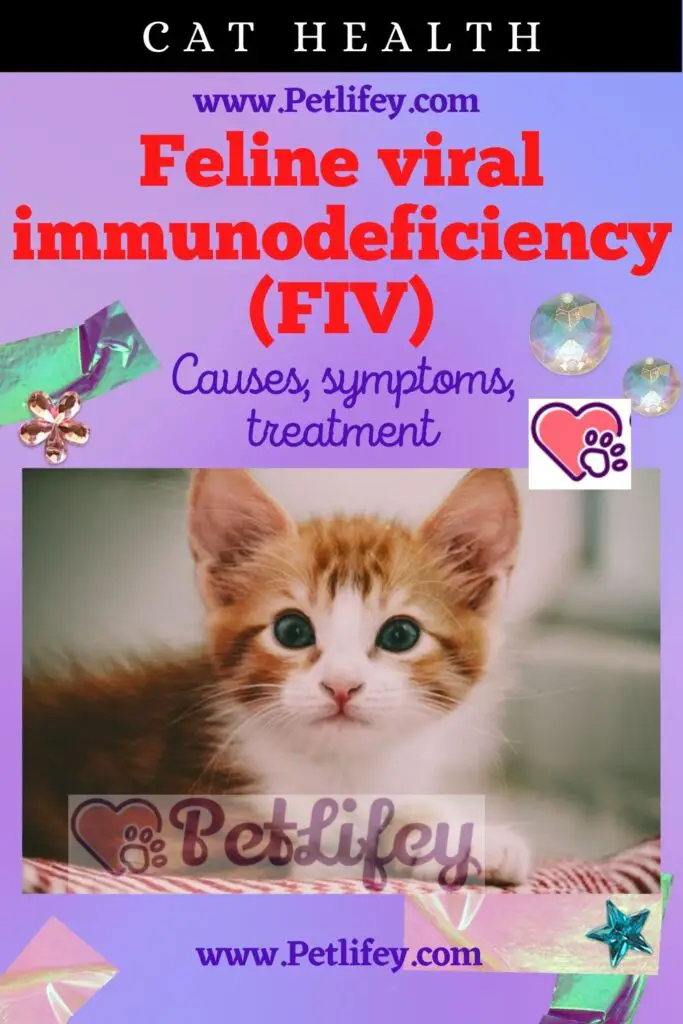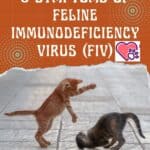
As reported in the article on FELV, feline retroviroses represent a group of diseases that play an important role in feline pathology. They are sustained by viruses called retroviruses due to the presence of an enzyme called reverse transcriptase. In this article we talk about FIV or feline viral immunodeficiency. It is a little known disease with many obscure points. The first target of infection is the cells of the lymphatic system (T lymphocytes) and salivary glands. T-helper lymphocytes (CD4) are predominantly affected. Replication in these cells leads to their destruction and decrease (reversal of the CD4 / CD8 ratio). The role of T-helper lymphocytes is to secrete cytokines following antigenic stimulation acting as “helpers” in both the adaptive and innate immune response, in open contrast to the cytotoxic CD8s which perform a direct action in killing good cells.
Pathogenesis:
- increased sensitivity to opportunistic infections
- decrease in T-helper lymphocytes (CD4)
- secondary production to thymus infection
- cell lysis following replication
- destruction of infected cells by the immune system
- induction of apoptosis
The progression of the infection causes an immune decompensation which is the basis of the clinical symptoms of the disease. Indeed, CD4s play an important role in promoting humoral and cell-mediated immune responses.
Symptoms:

Incubation period: 1-5 months, not very specific.
The clinical progression of the disease could be divided into various successive phases, not always distinguishable from each other:
- acute phase
- asymptomatic phase
- noticeable increase in lymph nodes
The virus is transmitted directly from infected cats to healthy ones by direct contact through the exchange of organic fluids (saliva, blood) and is not resistant to the environment. The disease has a greater incidence in urban areas and in places where there is a high concentration of stray cats. It is very common among non-sterilized adult male cats, free to go outside, who fight each other by biting each other when trying to defend the territory from other males.
The acute phase lasts from 2 to 4 months.
- Fever, neutropenia
- Clinically silent asymptomatic phase (months, years)
- Lymph node enlargement (months)
- Fever, leukopenia, lymphadenopathy, anemia, depression, weight loss, behavioral changes
- Immunosuppression: gingivitis, stomatitis, gastrointestinal problems, mange, etc.
- AIDS (1-6 months)
- Weight loss, multiple infections, death
Diagnosis is very complex if not almost impossible. The intervention of the laboratory is necessary for the detection of antibodies in serum.
Unfortunately, Prophylaxis is in vain as there is no vaccine on the market.
SUGGESTIONS FOR THE PROPHYLAXIS OF FELINE RETROSIS:
• Test all cats
• Elimination of positive cats
• Cleaning the litter, utensils and washing with suitable
disinfectant at least 10 days. before introducing
new animals
• Reduce entry and exit of cats from the farm
• Re-test cats after 12 months
• Removal of quarantine when animals have
tested negative in at least two consecutive tests
• Test cats newly introduced






